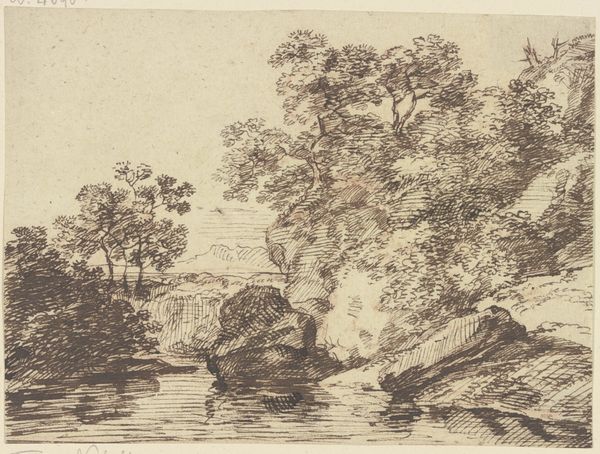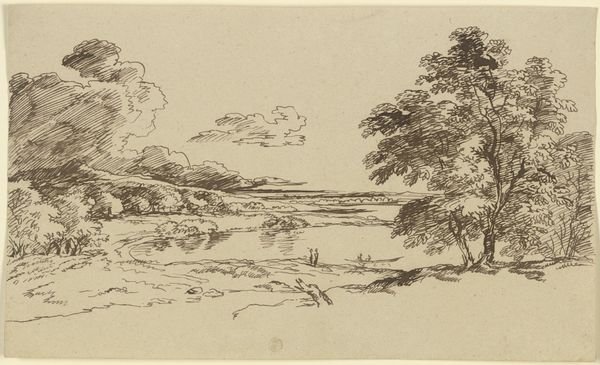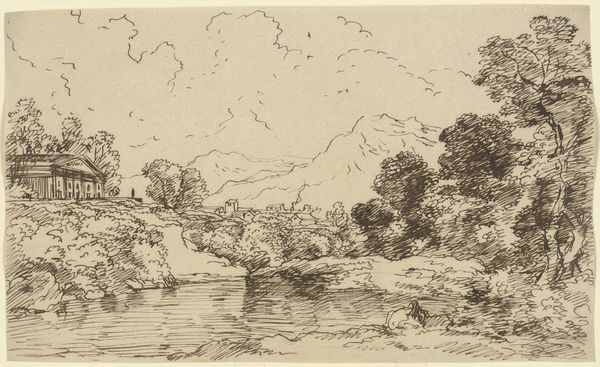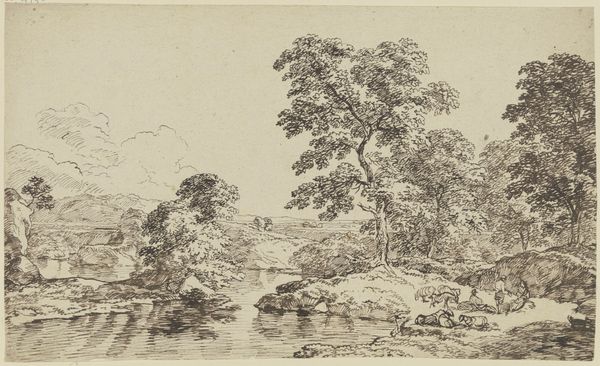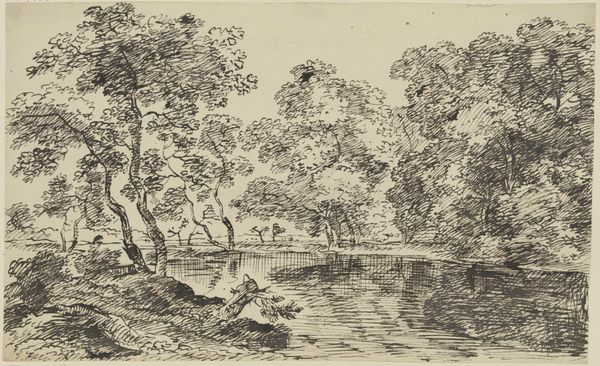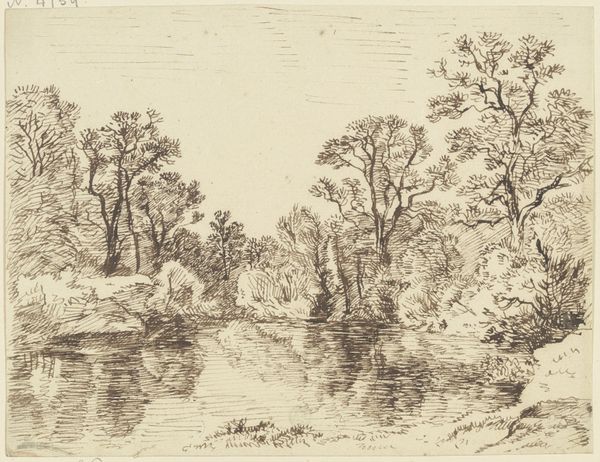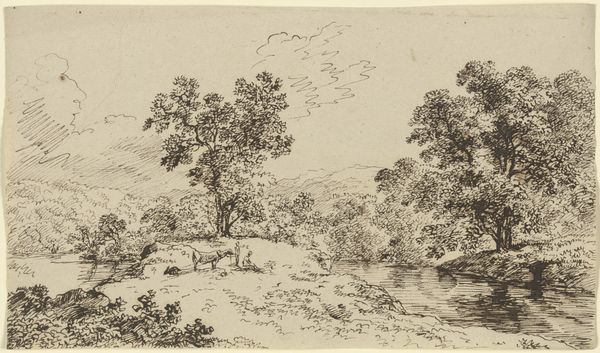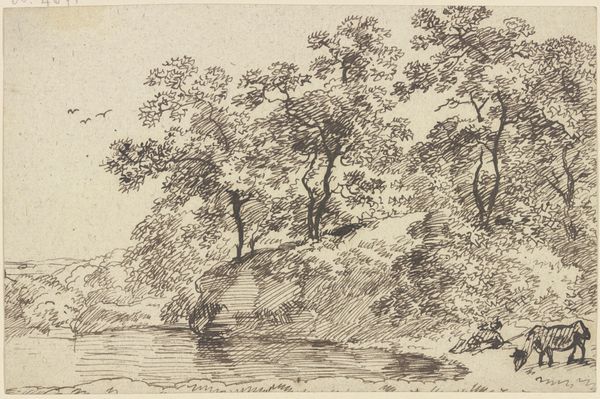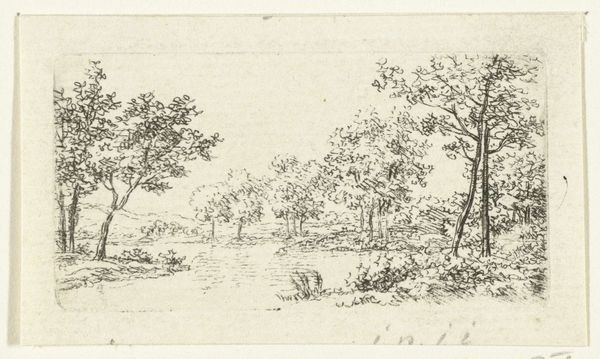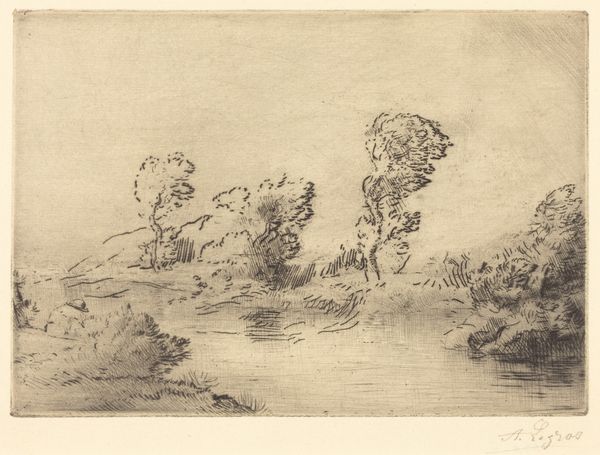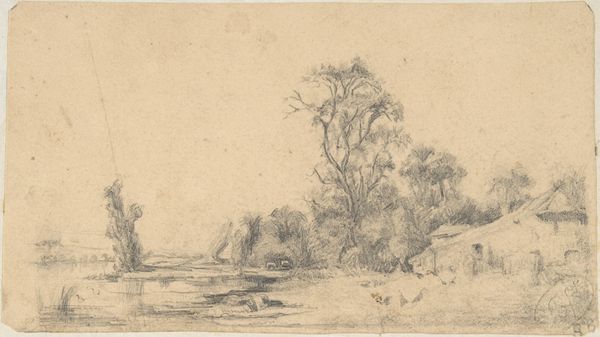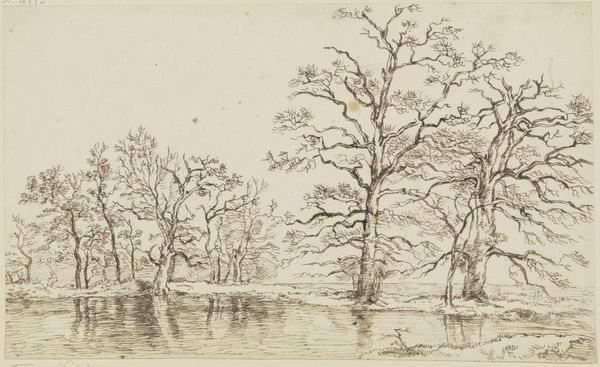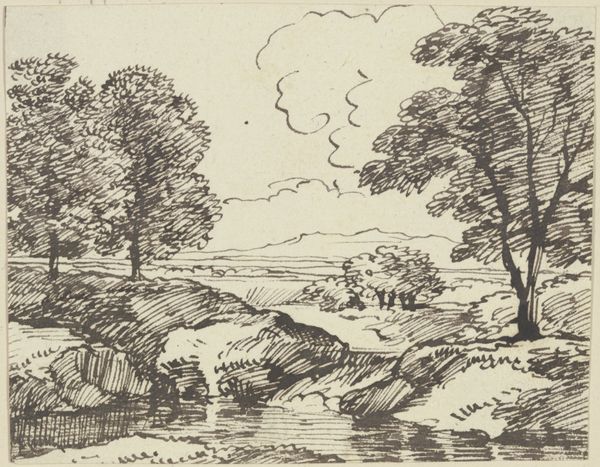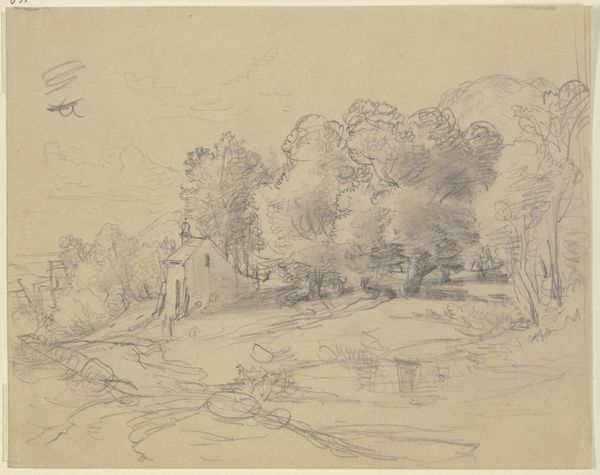
drawing, print, etching, paper
#
drawing
# print
#
impressionism
#
etching
#
landscape
#
paper
#
line
#
realism
Copyright: National Gallery of Art: CC0 1.0
Alphonse Legros created this etching, *Banks of the Marne*, using a metal plate, acid, and ink. The artist would have covered the plate with a waxy, acid-resistant ground before drawing an image through it with a sharp needle. The plate was then submerged in acid, which bit into the exposed lines. This process allowed Legros to create a print with fine, precise lines, capturing the textures of the trees, water, and foliage with remarkable detail. Etching, unlike painting, can be endlessly reproduced. This made it ideal for disseminating images widely, and was therefore a favorite of the Impressionists and other artists, who were intent on bringing art to the masses. Consider the labor involved in this printmaking process, from preparing the plate to the final printing. Legros wasn’t only an artist, but also a skilled craftsperson, deeply engaged in the materiality of his chosen medium. Ultimately, this work challenges conventional distinctions between fine art and craft.
Comments
No comments
Be the first to comment and join the conversation on the ultimate creative platform.
